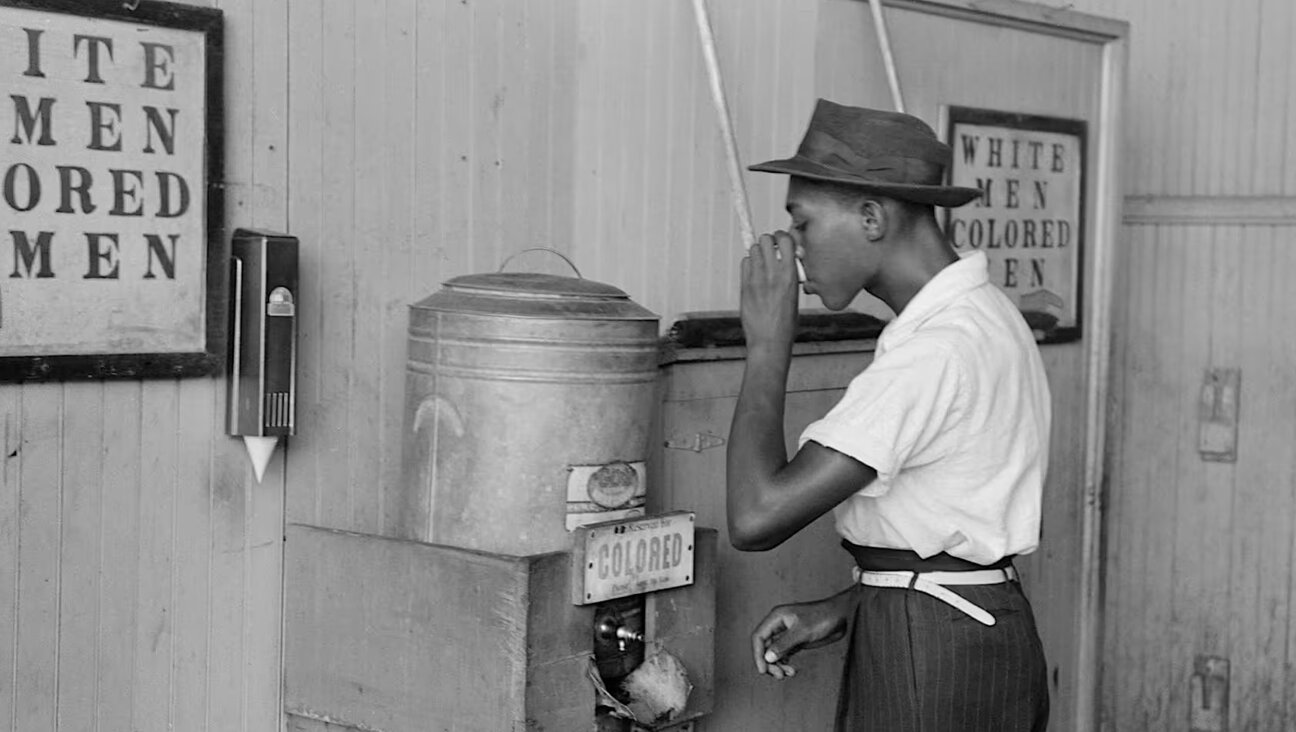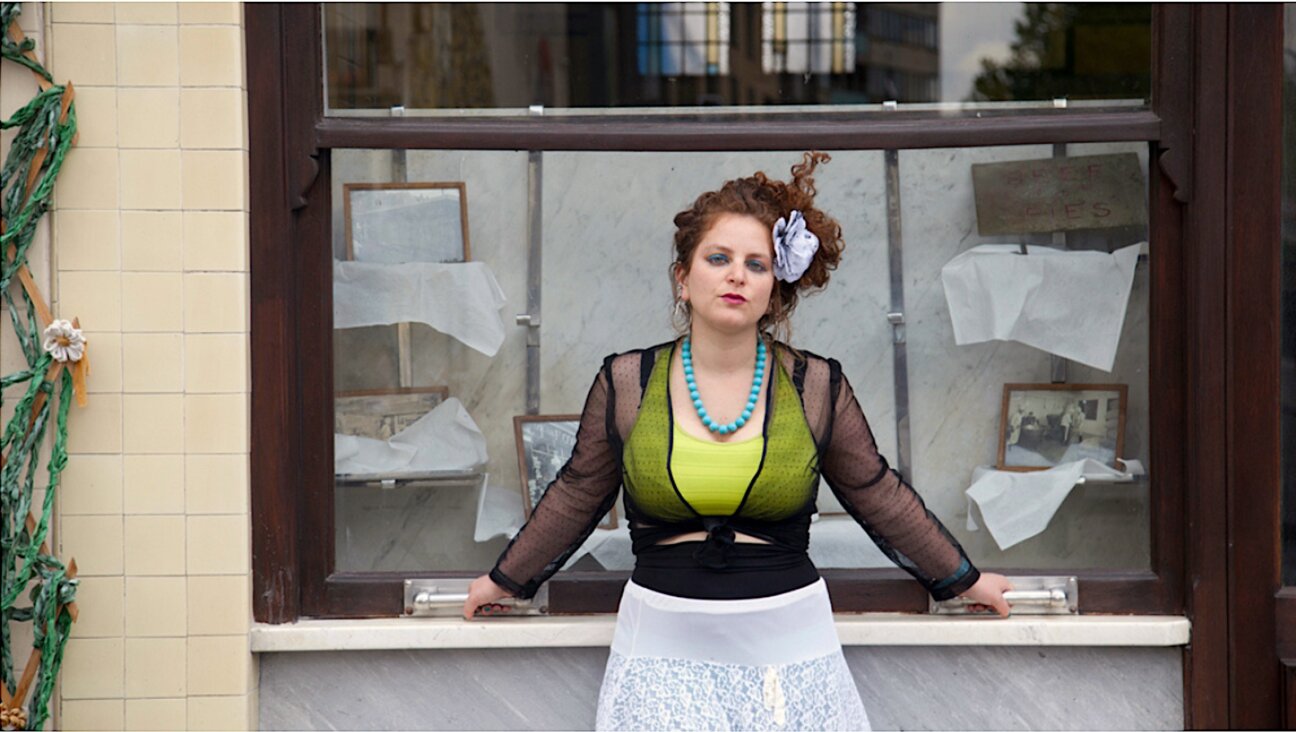Will Chaim Grade’s novel ‘Sons and Daughters’ come out in Yiddish?
The new English translation is drawing praise but surprisingly, the original Yiddish version was never released in book form

Chaim Grade, author of ‘Sons and Daughters’ Courtesy of the Forward
Last month’s release of Chaim Grade’s novel Sons and Daughters in English translation has drawn wide praise from a variety of newspapers, including the New York Times and the Forward. The book is a landmark publication, a novel of the famed Vilna-born Yiddish author whose previous novel Rabbis and Wives was a finalist for the Pulitzer Prize in 1983.
Sons and Daughters was first published in Yiddish in weekly installments at the newspaper Tog-Morgn Zhurnal, from 1965 until 1976. Originally, it was titled “Dos alte hoyz” (The Old House), and later renamed “Zin un tekhter” (Sons and Daughters). But then, after the newspaper folded, it ran in the Forverts, under yet another title, “Beys Harav” (The Rabbi’s House).
Surprisingly, the original Yiddish novel was never published in book form.
As potential readers peruse the enthusiastic reviews, they may begin to wonder, “What if I want to read the book in its original Yiddish?”
Although literary critic Adam Kirsch insists in his introduction to the text that “those readers [of Yiddish novels] are all but gone, along with the writers who addressed them,” the YIVO Institute for Jewish Research, who, since 2013 has jointly owned the rights to Chaim Grade’s archive along with the National Library of Israel, plans to produce an edited version of the Yiddish original text, hopefully by the end of 2025.
Jonathan Brent, YIVO’s executive director and CEO, told me that this project will take some time to accomplish. Although the novel, along with the rest of Grade’s archive, has already been digitized, the draft would need to be edited and redesigned to transform it from a digitized document with Grade’s notes and editorial marks into a clean copy for readers to enjoy.
“There may not be a huge market for a print version of the novel,” Brent said, “but there’s no question it should be published in Yiddish.” He explained that to make the publication affordable and accessible, it will likely be produced as a digital publication.
This Yiddish version doesn’t diminish the importance of the English publication, though. Indeed, Brent says that Grade would probably have been pleased to have found an English reception for this novel.
“He was a truly great writer. I think that he understood the limitations of a Yiddish-only publication. And he clearly was a man who was exploring the whole intellectual universe in many languages… I didn’t know him, but I know from my conversations with [his translator] Curt Leviant that he and Grade would talk for hours over a word or phrase [in English translation]. So I think these English language translations were very meaningful to him.”
Sons and Daughters takes on the theme of tension and change between generations of a family, including children who choose to express themselves in cultures and languages beyond the Yiddish of their rabbinical fathers. It seems fitting then that the novel is being celebrated in English translation at a time when most children of Yiddish speakers outside the Hasidic community don’t know Yiddish.
Still, getting it published in Yiddish would be very welcome for admirers of Grade’s Yiddish prose and is a fitting tribute to its author, who was committed to publishing in the language, even as its audience was diminishing.
Yiddish readers have much to look forward to in the novel. “The Yiddish in Sons and Daughters, as in Grade’s other novels, is extraordinarily rich and nuanced,” Rose Waldman, the English translator of the volume, told me. “Readers of the original Yiddish experience the full resonance of his linguistic choices — particularly his strategic use of loshn-koydesh (rabbinical Hebrew and Aramaic) vocabulary, which often carries cultural and religious connotations that simply cannot be fully captured in translation. There’s also a certain rhythmic quality and humor to Grade’s writing that sometimes evades even the most skilled translation efforts.”
In the meantime, the Yiddish novel can be found in Grade’s digitized archive in a more raw form. Even after the edited version is published, scholars may find themselves consulting the original for Grade’s notes. In addition, YIVO has a vast collection of Grade’s letters and other materials that can be read alongside his literary work, all of which have been digitized.
Yiddish readers will no doubt rejoice whenever the Yiddish original is released. As Waldman put it: “Such publications have become precious rarities in today’s literary landscape.”
Although there’s no definite timeline yet for publishing the Yiddish original, Brent reassured Yiddish readers that it will happen. “I have a commitment to doing it,” he said.















